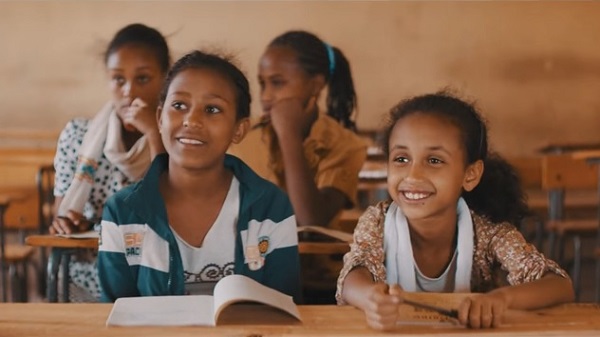
The Country Partnership Framework (CPF) will support Ethiopia’s ambitious goals that the country has articulated in the Second Growth and Transformation Plan (GTP II)
ADDIS ABABA (Semonegna)–Geographically spanning more than one million square kilometers, Ethiopia is home to nearly 100 million people of 98 nationalities who speak 93 languages. Ethiopia also hosts more than 800,000 refugees and is the second largest host of refugees in Africa, after Uganda.
Agriculture is the main stay of the economy; and exports are almost entirely relies on agricultural commodities. In the wet highland area, farmers rely on rainfed irrigation while in the hot lowlands, pastoralists move with their herds to find suitable grazing.
Over the past decade, Ethiopia has achieved significant progress in economic, social and human development. The poverty rate has declined from 55% in year 2000 to 34% in 2011.
Real GDP growth has averaged 10.5% per year between 2003 and 2015 and life expectancy rose from 52 year to 65 years.
When it comes to Millennium Development Goals (MDGs), Ethiopia has achieved a number of these goals. For instance, primary school enrollment has quadrupled; the rate of child mortality has been halved; and access to clean water has more than doubled.
While Ethiopia has reached impressive milestones in broad areas, significant challenges remain.
What Is the World Bank Group’s Country Partnership Framework (CPF)?
In 2014, the World Bank Group (WBG) introduced a new Country Engagement approach, in line with the 2013 WBG Corporate Strategy that aims to streamline operations across the institution (public and private sector) and focus all operations moving forward on two goals of reducing absolute poverty and boosting shared prosperity.
The new approach replaced the Country Assistance/Partnership Strategy with the Country Partnership Framework and formally took effect on July 1st 2014.
What Does CPF Have for to Ethiopia?
The Country Partnership Framework (CPF) will support Ethiopia’s ambitious goals that the country has articulated in the Second Growth and Transformation Plan (GTP II) in May 2016. One of the notable goals of the plan is that Ethiopia seeks to become a low middle-income country by 2025.
This CPF reflects extensive consultations with the broad range of stakeholders involving more than 1,000 experts from the federal and regional governments, development partners, academia, think thanks, civil society organizations (CSOs) and non-governmental organizations (NGOs), as well as the private sector.
The timing of the CPF ideal as it coincides with “Round 18” of the International Development Association (IDA 18) replenishment.
Ethiopia’s share of IDA 18, which will be approximately 4 to 4.6 billion USD, will help to address the challenges of poverty, inequality including gender equality, human development, jobs, climate resilience and private sector-led growth. By working together with development partners, the World Bank Group will leverage these resources and help Ethiopia achieve its ambitious development objectives. Given the important role of the private sector, the CPF will further innovate and apply the principles of the cascade approach.
This is a CPF for maximum impact. Some of the highly ambitious target of this CPF include:
- the number of people with access to electricity will double, reaching 50%,
- the number of people with access to improved water sources will rise by 25% and those with access to basic sanitation will increase by 43%,
- up to 14 million people will be protected from food insecurity,
- the rate of contraceptive use by rural women will increase by more than 40%,
- the prevalence of standing in children age of zero to 23 months will decrease by 36%,
- learning outcomes for girls in grade four in English in mathematics will improve at least 25%,
- agricultural productivity for female-headed households will increase by 23%,
- travel time on upgraded roads will be reduced by 56%, which in turn will improve market access for farmers.
Already in the first three years of women’s entrepreneur development project, more than 6,000 female entrepreneurs received loans to launch new businesses. The targets of CPF to tackle the country’s challenges are ambitious and the focus is on delivering quality services that will have significant impact on all of the people of Ethiopia.
Semonegna.com
——
Other stories:
- EU Announces Humanitarian Funding of €1 Million to the Global Education Cluster
- New Country Partnership Framework to Support an Inclusive and Equitable Growth Path for Ethiopia
- Land Governance Key to Africa’s Transformation, Says Abdalla Hamdok at Opening of Land Policy Conference
- World Bank Group Reaffirms Its Commitment to Advance Equitable Access to Basic Services for Millions of Ethiopians
- Ethiopia Won the 2017 United Nations’ Award for Excellence in Promoting Investment in the Sustainable Development Goals (SDGs)
